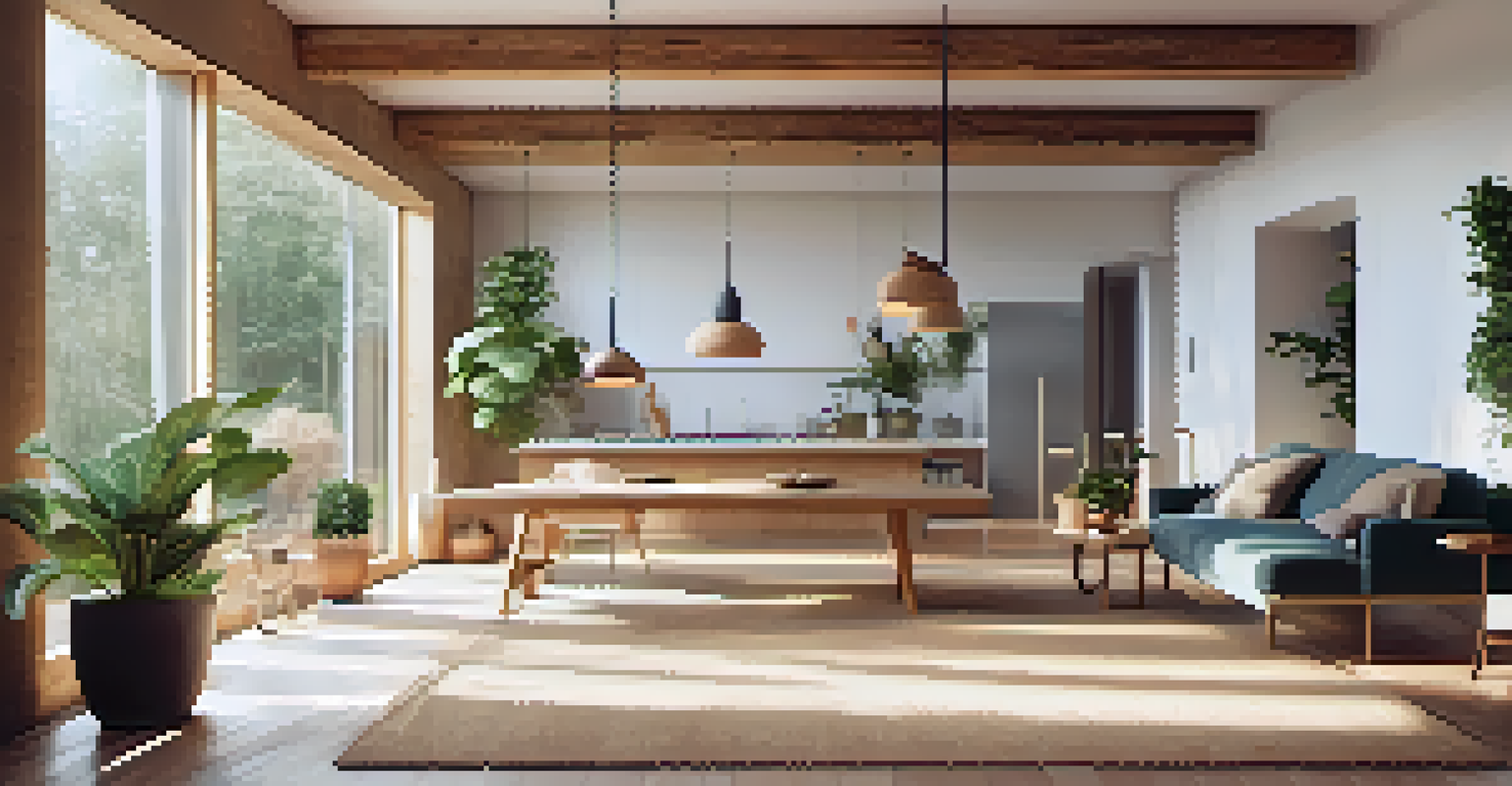Exploring the Benefits of Biodegradable Building Materials

Understanding Biodegradable Building Materials
Biodegradable building materials are those that can break down naturally, reducing environmental impact. Unlike traditional materials, which can linger in landfills for decades, these eco-friendly options offer a sustainable alternative. They often consist of organic substances like bamboo, hemp, or recycled wood, making them more appealing in today’s eco-conscious world.
The greatest threat to our planet is the belief that someone else will save it.
The process of biodegradation involves microorganisms breaking down materials into natural substances, such as water and carbon dioxide. This means that, when disposed of properly, biodegradable materials can enrich the soil instead of polluting it. This characteristic is what sets them apart in the construction industry.
As more builders and architects embrace sustainability, understanding these materials is paramount. They not only meet modern environmental standards but also contribute to a healthier planet. Exploring the various types available can help in making informed choices for future projects.
Environmental Impact of Biodegradable Materials
One of the most significant benefits of biodegradable building materials is their positive environmental impact. By choosing these options, builders can significantly reduce waste and pollution associated with construction. This is particularly crucial as urbanization continues to expand, creating a pressing need for sustainable development.

These materials often come from renewable resources, which means they help preserve natural habitats and reduce the depletion of non-renewable resources. For example, bamboo grows rapidly and can be harvested without harming the ecosystem, making it a superstar in sustainable construction. By utilizing such materials, we contribute to a circular economy, where resources are reused rather than discarded.
Eco-Friendly Construction Solutions
Biodegradable building materials offer a sustainable alternative to traditional options, breaking down naturally and enriching the soil.
Moreover, the reduction in greenhouse gas emissions during the production and decomposition of biodegradable materials is worth noting. This shift can lead to a healthier atmosphere, combating climate change and fostering a more sustainable future for generations to come.
Economic Advantages of Using Biodegradable Options
While the initial cost of biodegradable building materials can sometimes be higher, their long-term economic benefits often outweigh these upfront expenses. For instance, many biodegradable materials require less energy to produce compared to traditional materials, leading to lower overall production costs. Over time, this can translate into significant savings for builders and developers.
Sustainability is no longer about doing less harm. It’s about doing more good.
Additionally, using sustainable materials can enhance a building's value. Properties constructed with eco-friendly options often attract more buyers who are willing to pay a premium for environmentally responsible designs. This trend is becoming increasingly common in both residential and commercial real estate markets.
Moreover, many governments offer incentives or tax breaks for using sustainable materials in construction projects. These financial benefits can help offset initial costs, making biodegradable options not only an environmentally conscious choice but also an economically advantageous one.
Health Benefits of Biodegradable Materials
Using biodegradable building materials can significantly improve indoor air quality, which is essential for the health and well-being of occupants. Traditional building materials often contain harmful chemicals that can off-gas into the living space, leading to respiratory issues and other health problems. In contrast, biodegradable materials typically have lower levels of volatile organic compounds (VOCs).
Natural materials like cork or wool not only enhance air quality but also provide better insulation, reducing energy consumption. This means that homes and buildings made with these materials can remain more comfortable year-round without relying heavily on heating or cooling systems. The result is a win-win for both the environment and the health of the inhabitants.
Economic and Health Benefits
While initial costs may be higher, biodegradable materials can lead to long-term savings and improved indoor air quality for occupants.
Additionally, the use of organic materials can create a soothing atmosphere that promotes mental well-being. The natural aesthetic of biodegradable materials can foster a sense of calm and connection to nature, enhancing the living experience for those who inhabit these spaces.
Durability and Performance of Biodegradable Materials
A common misconception is that biodegradable materials are less durable than their traditional counterparts. However, many biodegradable options, such as engineered wood and bamboo, offer excellent strength and resilience. These materials have been tested and proven to withstand various environmental conditions, making them suitable for a wide range of construction applications.
For example, bamboo’s tensile strength is comparable to steel, making it a robust choice for structural applications. As technology advances, more biodegradable materials are being developed to enhance their performance characteristics, ensuring they meet or exceed industry standards.
Investing in biodegradable materials doesn’t mean sacrificing quality. Many builders have successfully showcased that these materials can perform exceptionally well in different climates and uses, providing peace of mind to those looking to make sustainable choices without compromising on durability.
Innovations in Biodegradable Building Materials
The field of biodegradable building materials is rapidly evolving, with innovations continually emerging to enhance their functionality. Researchers and manufacturers are constantly exploring new materials and production methods to improve sustainability. For instance, mycelium-based materials, derived from fungi, are gaining attention for their ability to produce strong, lightweight, and biodegradable panels.
Another exciting development is the use of bio-composites, which combine organic materials with resins to create durable products that can replace conventional plastics in construction. These innovations not only offer practical solutions but also inspire a new generation of builders to think creatively about sustainable design.
Innovations Drive Future Potential
Ongoing research and technological advancements are enhancing the performance and accessibility of biodegradable materials in construction.
As we look to the future, the integration of technology and sustainable practices will likely lead to even more breakthroughs in biodegradable materials. This ongoing research and development promise to make eco-friendly building options more accessible and effective than ever before.
Challenges in Adopting Biodegradable Materials
Despite the numerous advantages, there are challenges to adopting biodegradable building materials on a larger scale. One significant hurdle is the perception that these materials are less reliable or more expensive. To overcome this, education and awareness campaigns are essential to inform builders and consumers about the benefits and viability of biodegradable options.
Additionally, the supply chain for biodegradable materials can sometimes be limited, making it difficult for builders to source these products consistently. As demand grows, however, more manufacturers are likely to enter the market, improving availability and driving down costs over time.

Lastly, regulatory hurdles can also impede the widespread use of biodegradable materials. Building codes and standards often prioritize traditional materials, which can make it challenging for sustainable options to gain acceptance. Advocating for policy changes and collaboration between stakeholders can help pave the way for a more sustainable construction industry.